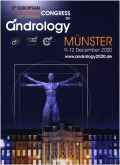- 钛学术文献服务平台 \
- 学术期刊 \
- 医药卫生期刊 \
- 外科学期刊 \
- 亚洲男性学杂志(英文版)期刊 \
null
Adriamycin induces H2AX phosphorylation in human spermatozoa
基本信息来源于合作网站,原文需代理用户跳转至来源网站获取
摘要:
Aim: To investigate whether adriamycin induces DNA damage and the formation of γH2AX (the phosphorylated form of histone H2AX) foci in mature spermatozoa. Methods: Human spermatozoa were treated with adriamycin at different concentrations. γH2AX was analyzed by immunofluorescent staining and flow cytometry and double- strand breaks (DSB) were detected by the comet assay. Results: The neutral comet assay revealed that the treatment with adriamycin at 2 μg/mL for different times (0.5, 2, 8 and 24 h), or for 8 h at different concentrations (0.4, 2 and 10 μg/mL), induced significant DSB in spermatozoa. Immunofluorent staining and flow cytometry showed that the expression of γH2AX was increased in a dose-dependent and time-dependant manner after the treatment of adriamycin. Adriamycin also induced the concurrent appearance of DNA maintenance/repair proteins RAD50 and 53BP1 with γH2AX in spermatozoa. Wortmannin, an inhibitor of the phosphatidylinositol 3-kinase (PI3K) family, abolished the co-appearance of these two proteins with γH2AX. Conclusion: Human mature spermatozoa have the same response to DSB-induced H2AX phosphorylation and subsequent recruitment of DNA maintenance/repair proteins as somatic cells.

推荐文章
期刊_丙丁烷TDLAS测量系统的吸收峰自动检测
带间级联激光器
调谐半导体激光吸收光谱
雾剂检漏 中红外吸收峰 洛伦兹光谱线型
不同盐度、温度及光照对漂浮浒苔生理生态的影响
浒苔
盐度
温度
光照
生理生态
期刊_联合空间信息的改进低秩稀疏矩阵分解的高光谱异常目标检测
高光谱图像
异常目标检测 低秩稀疏矩阵分解 稀疏矩阵 残差矩阵
内容分析
关键词云
关键词热度
相关文献总数
(/次)
(/年)
文献信息
| 篇名 | Adriamycin induces H2AX phosphorylation in human spermatozoa | ||
| 来源期刊 | 亚洲男性学杂志(英文版) | 学科 | |
| 关键词 | |||
| 年,卷(期) | 2008,(5) | 所属期刊栏目 | |
| 研究方向 | 页码范围 | 749-757 | |
| 页数 | 9页 | 分类号 | |
| 字数 | 语种 | 英文 | |
| DOI | |||
五维指标
引文网络
引文网络
二级参考文献 (0)
共引文献 (0)
参考文献 (13)
节点文献
引证文献 (0)
同被引文献 (0)
二级引证文献 (0)
1900(1)
- 参考文献(1)
- 二级参考文献(0)
2000(1)
- 参考文献(1)
- 二级参考文献(0)
2002(2)
- 参考文献(2)
- 二级参考文献(0)
2004(4)
- 参考文献(4)
- 二级参考文献(0)
2005(1)
- 参考文献(1)
- 二级参考文献(0)
2006(4)
- 参考文献(4)
- 二级参考文献(0)
2008(0)
- 参考文献(0)
- 二级参考文献(0)
- 引证文献(0)
- 二级引证文献(0)
引文网络交叉学科
相关学者/机构
期刊影响力
亚洲男性学杂志(英文版)
主办单位:
中国科学院上海药物研究所
出版周期:
双月刊
ISSN:
1008-682X
CN:
31-1795/R
开本:
大16开
出版地:
上海市太原路294号16号楼302室
邮发代号:
4-648
创刊时间:
1999
语种:
eng
出版文献量(篇)
2771
总下载数(次)
1
总被引数(次)
9935
期刊文献
相关文献
推荐文献
- 期刊分类
- 期刊(年)
- 期刊(期)
- 期刊推荐
亚洲男性学杂志(英文版)2022
亚洲男性学杂志(英文版)2021
亚洲男性学杂志(英文版)2020
亚洲男性学杂志(英文版)2019
亚洲男性学杂志(英文版)2018
亚洲男性学杂志(英文版)2017
亚洲男性学杂志(英文版)2016
亚洲男性学杂志(英文版)2015
亚洲男性学杂志(英文版)2014
亚洲男性学杂志(英文版)2013
亚洲男性学杂志(英文版)2012
亚洲男性学杂志(英文版)2011
亚洲男性学杂志(英文版)2010
亚洲男性学杂志(英文版)2009
亚洲男性学杂志(英文版)2008
亚洲男性学杂志(英文版)2007
亚洲男性学杂志(英文版)2006
亚洲男性学杂志(英文版)2005
亚洲男性学杂志(英文版)2004
亚洲男性学杂志(英文版)2003
亚洲男性学杂志(英文版)2002
亚洲男性学杂志(英文版)2001
亚洲男性学杂志(英文版)2008年第6期
亚洲男性学杂志(英文版)2008年第5期
亚洲男性学杂志(英文版)2008年第4期
亚洲男性学杂志(英文版)2008年第3期
亚洲男性学杂志(英文版)2008年第2期
亚洲男性学杂志(英文版)2008年第1期

 免费查重
免费查重










